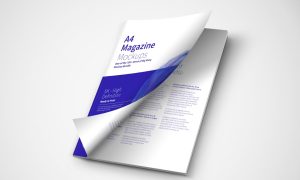Effect of heat treatment on bonding interface in
explosive welded copper/stainless steel
اثر عملیات حرارتی روی فصل مشترک اتصال در جوشکاری انفجاری
فولاد زنگ نزن/مس
ABSTRACT
In this investigation, explosive welding and heat treatment processes provided an effective method for manufacturing high-strength and high-ductility copper/ austenitic stainless steel couple.
In order to improve diffusion in the interface of copper/stainless steel, first the tensile samples were provided from the welded part, then they were subjected to annealing at 300 C (below recrystallization temperature) for 8–۳۲ h with 8 h intervals and then samples were cooled in the furnace. Optical microscopy (OM), scanning electron microscopy (SEM) and energy dispersive spectroscopy (EDS) were utilized to evaluate the possibility of diffusion in the joints.
Moreover, in order to measure the hardness of the samples, microhardness test was performed. Microstructural evaluations showed that the stainless steel 304L had a wavy interface. Furthermore, the post heat treatment process resulted in great enhancement of diffusion.
Microhardness measurements showed that the hardness of the sample near to the interface is greatly higher than other parts; this is due to plastic deformation and work hardening of copper and stainless steel 304L in these regions. The interface of samples with and without the post heat treatment was exhibited ductile and brittle fracture, respectively.
![]() جهت دانلود رایگان نسخه لاتین این مقاله اینجا کلیک کنید .
جهت دانلود رایگان نسخه لاتین این مقاله اینجا کلیک کنید .

چکیده
در این تحقیق فرایندهای عملیات حرارتی و جوشکاری انفجاری روش موثری را برای ایجاد اتصال مس/فولاد زنگ نزن آستنیتی با استحکام و داکتیلیته بالا فراهم آوردند. به منظور بهبود فرایند نفوذ در فصل مشترک اتصال مس-فولاد زنگ نزن آستنیتی ۳۰۴L، ابتدا نمونه های کشش از قطعات جوشکاری شده، تهیه و عملیات آنیل کردن در دمای ۳۰۰ درجه سانتی گراد (زیر دمای تبلور مجدد) و به مدت زمان های ۸ تا ۳۲ ساعت و با فواصل زمانی ۸ ساعتی بر روی آن ها انجام شد و سپس نمونه ها در محیط کوره سرد شدند. پس از انجام آزمون کشش بر روی نمونه های عملیات حرارتی شده، از میکروسکوپ نوری (OM)، میکروسکوپ الکترونی روبشی (SEM) و آنالیز اسپکتروسکوپی انرژی پراکنده (EDS) جهت بررسی احتمال نفوذ در مواد متصل شده استفاده گردید.
همچنین از آزمون ریزسختی سنجی برای ارزیابی سختی نمونه های جوشکاری شده استفاده شد. بررسی های ریزساختاری نشان داد که فصل مشترک اتصال مس- فولاد زنگ نزن آستنیتی ۳۰۴L ، موجی شکل است. همچنین فرایند عملیات حرارتی آنیل کردن ، باعث افزایش قابل توجه نفوذ در فصل مشترک این اتصال شده است. نتایج آزمون ریزسختی سنجی نیز نشان داد که سختی نمونه ها در نزدیکی فصل مشترک به علت تغییرشکل پلاستیک و کارسختی مس و فولاد زنگ نزن آستنیتی ۳۰۴L در نزدیکی فصل مشترک بر اثر نیروی انفجار از دیگر نواحی بالاتر است. در فصل مشترک نمونه ها با عملیات حرارتی و بدون عملیات حرارتی ، به ترتیب شکست داکتیل و شکست ترد افزایش یافت.
![]() جهت دانلود ترجمه تخصصی و فارسی این مقاله می توانید وجه آنرا پرداخت نموده و بلافاصله دریافت نمایید.
جهت دانلود ترجمه تخصصی و فارسی این مقاله می توانید وجه آنرا پرداخت نموده و بلافاصله دریافت نمایید.







نقد و بررسیها
هنوز بررسیای ثبت نشده است.